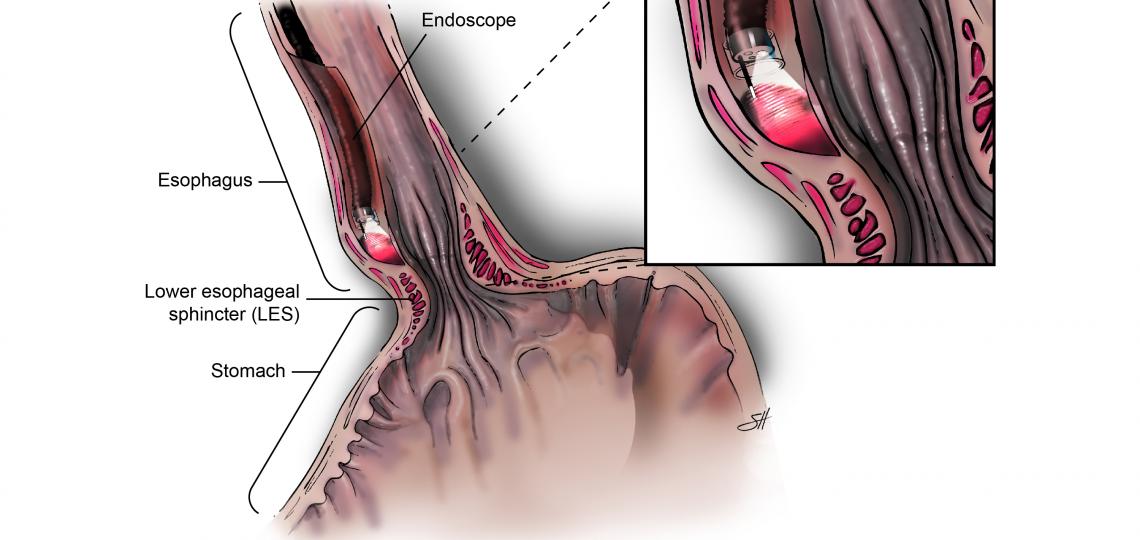The POEM procedure is performed to treat the swallowing disorder known as achalasia.
What Is Achalasia?
Achalasia is a disorder of motility in the esophagus in which the esophagus has lost its normal ability to move food and liquids down into the stomach. In addition, the lower esophageal sphincter, the muscular ring that controls food passing from the esophagus to the stomach, doesn’t relax properly to let food and liquids into the stomach.
Symptoms of Achalasia
- Difficulty in swallowing
- Feeling like food gets stuck in your esophagus (also called globus sensation)
- Chest pain behind your breastbone, especially after eating
- Heartburn
- Regurgitation
- Weight loss
How Is the POEM Procedure Performed?
The POEM procedure is performed by endoscope. There is no incision in the chest or abdomen. The endoscope (a thin, flexible tube) is passed through the patient's mouth into the esophagus. Using a blade on the end of the scope, an incision is made in the lining (mucosa) of the inside of the esophagus and the scope is passed through into the space created between the mucosal and muscular layers of the esophagus. This relaxes the pressure on the esophagus and allows food to pass into the stomach with less resistance, by gravity. The small incision is closed using endoscopic clips, and the endoscope is removed from the patient.
After the procedure, patients are typically admitted to the hospital for 1 day. On the night after your procedure, you will stay NPO (or nothing to eat by mouth) and receive IV fluids to stay hydrated. The next morning, you will be started on a clear liquid diet. If you tolerate this diet without nausea, you are discharged home. You will be instructed to start on a Full liquid diet the next day – this is foods like creamy soups, protein drinks, yogurt, and other foods that are the consistency of a smoothie that has been blended and strained.
Your surgeon will instruct you to follow a liquid diet for 2 weeks. You will also be instructed to take your medications in crushed or liquid forms. This is to allow for swelling to go down and to ensure the clips that were used during surgery remain in place. Once you see your surgeon at your follow up appointment, you will be instructed to progress to a soft solids diet.
For 6 weeks after your surgery, you should avoid any medications that thin your blood, even medications like Aleve (naproxen) or Advil (ibuprofen) to avoid bleeding in your esophagus.
It is important to stay active after surgery, you should walk a few times a day every day while you recover. There are no activity restrictions after this surgery, so you will be able to return to work and your normal routine within a few days after the procedure.
How Does POEM Compare to Standard Surgical Procedures to Treat Achalasia?
Outcomes are comparable to the Heller myotomy, which is the gold standard. Heller has equivalent outcomes to balloon dilation. However, dilatation requires repeat interventions, has some anatomical limitations, and risk of perforation. Though repeat surgical intervention isn't common with achalasia, POEM makes it easier to re-intervene if needed.
What Is the Future of POEM?
It will likely replace the Heller myotomy as the surgical gold standard within the next three to five years.
After Surgery
Patients may need to take life-long acid reflux medications.
Unlike balloon dilatation, which requires repeat interventions, repeat surgical intervention isn't common with a POEM procedure, and since it is a less invasive way of accomplishing a myotomy, a POEM procedure makes it easier to re-intervene if necessary.








 Credit
Credit
